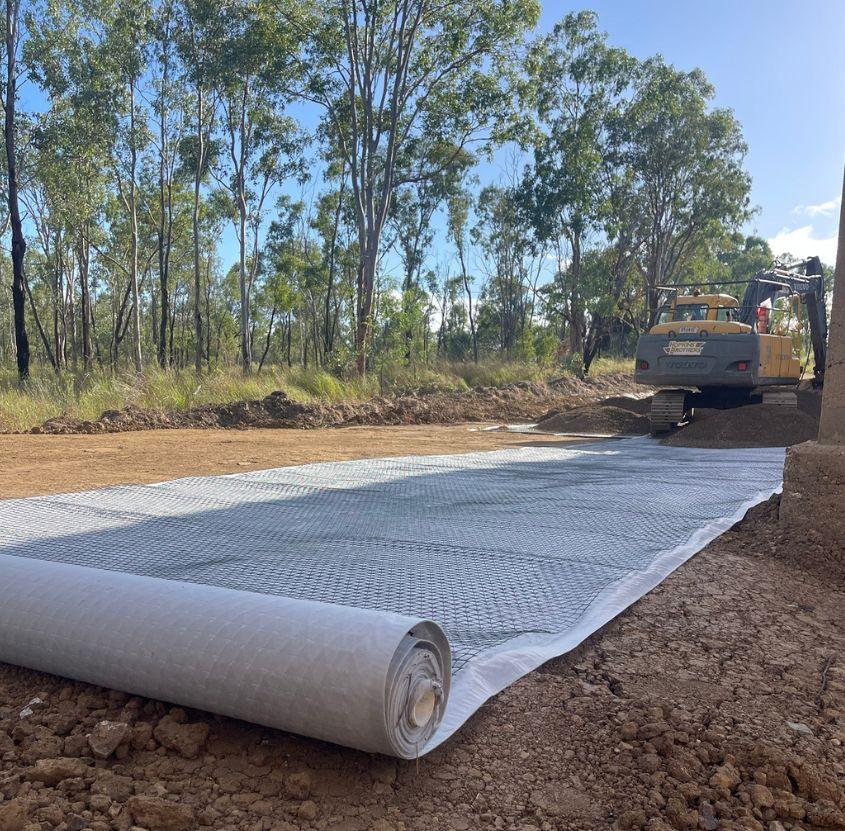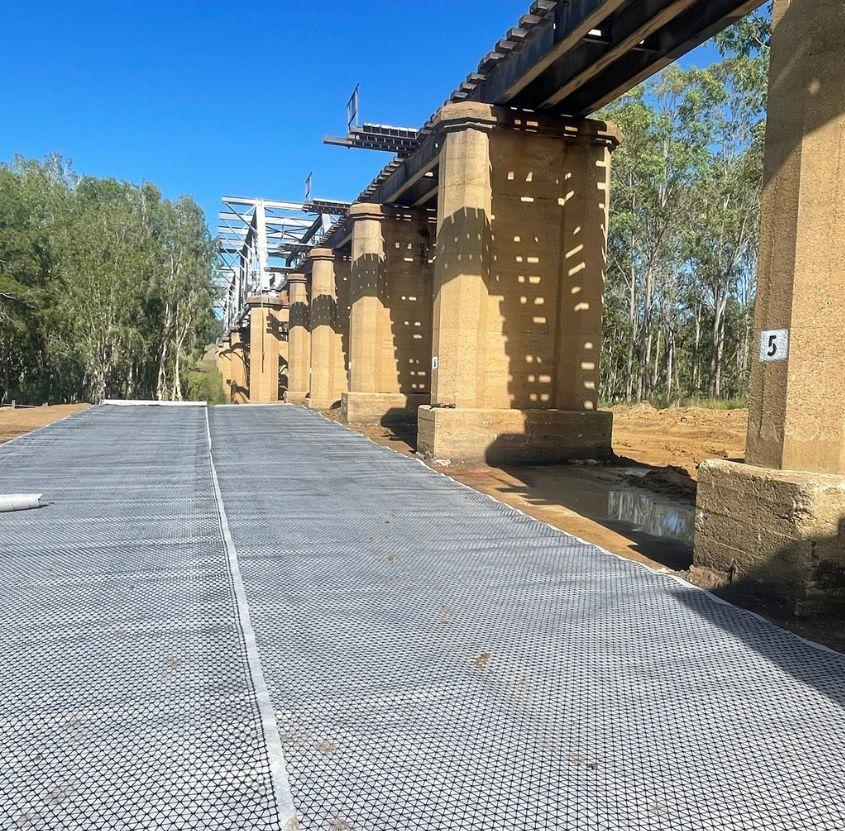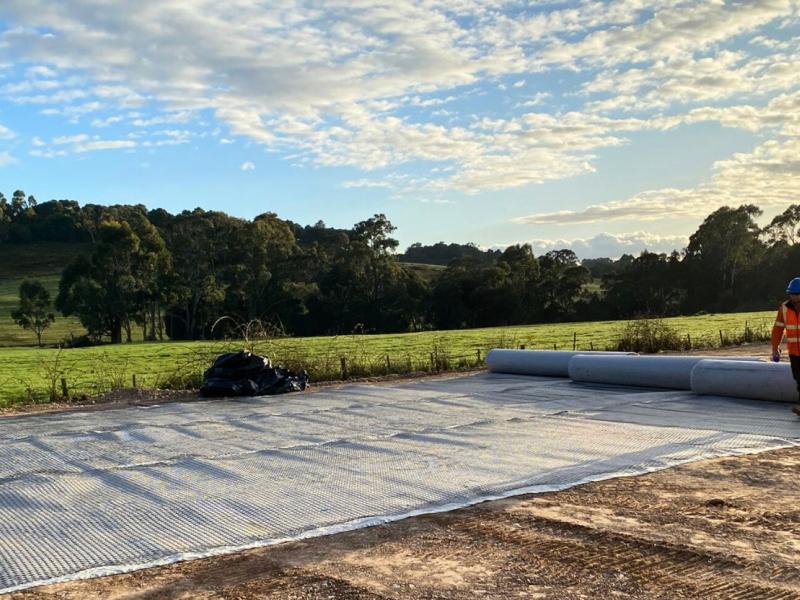
RESTORING HISTORIC ALLIGATOR CREEK BRIDGE WITH INNOVATIVE GEOGRID

PROJECT DESCRIPTION
This project involved upgrading the historic Alligator Creek Bridge, located in Queensland. Originally built in 1911, the 253-metre-long bridge required maintenance as part of Queensland Rail’s asset renewal program. The upgrades included the replacement of several ageing concrete piers and general maintenance to ensure the bridge’s long-term structural integrity.
Geofabrics was approached by the lead contractor for suggestions to optimise the thickness of the working platform required for a tracked piling rig.
OUR SOLUTION
Geofabrics worked closely with the client’s geotechnical engineer to propose a working platform using multiaxial geogrids with a thickness of 300 millimetres. This reduced the working platform thickness by 45% compared to the alternative without geogrid. The platform thickness was determined using Tensar’s T-value method, an approach that accurately assesses the positive effect of stabilising geogrids on the bearing capacity of working platforms validated through full-scale testing.
The geogrid was laminated with Bidim Green A29G geotextile and placed in accordance with the installation guidelines provided by the manufacturer, Tensar. A material specified by TMR Type 2.3 standards was used to construct the platform, with a total 1,150 square metres of multiaxial geogrid procured for the project.
The client expressed satisfaction with both the installation of the geogrid solution and the overall outcome of the project. The client’s representative commented, “The geosynthetic used not only allowed us to meet the desired loading capacity requirements on the piling pads but also enabled us to minimise the thickness required as intended. We look forward to more successful collaborations in the future”.
PRODUCTS USED
Tensar® Multiaxial Geogrid
- Made from a punched polypropylene sheet that is used to form hexagonal structures to effectively confine and interlock aggregate particles
- Reduces granular layer thickness and CO₂ emissions in construction by up to 50%
- Improves bearing capacity on railway projects and stabilises the rail ballast and track bed
- Durable structure that provides greater stability and stiffness in challenging weather and environmental conditions
- Can be installed quickly, reducing construction costs
Bidim® Green Non-Woven Geotextile
- A strong three-dimensional structure with high elongation and equal biaxial strength properties in both directions
- Made with a combination of recycled PET and virgin plastic materials
- Provides excellent filtration, separation, drainage and protection performance
- Reduced need for quarried fill materials and reduced construction times











